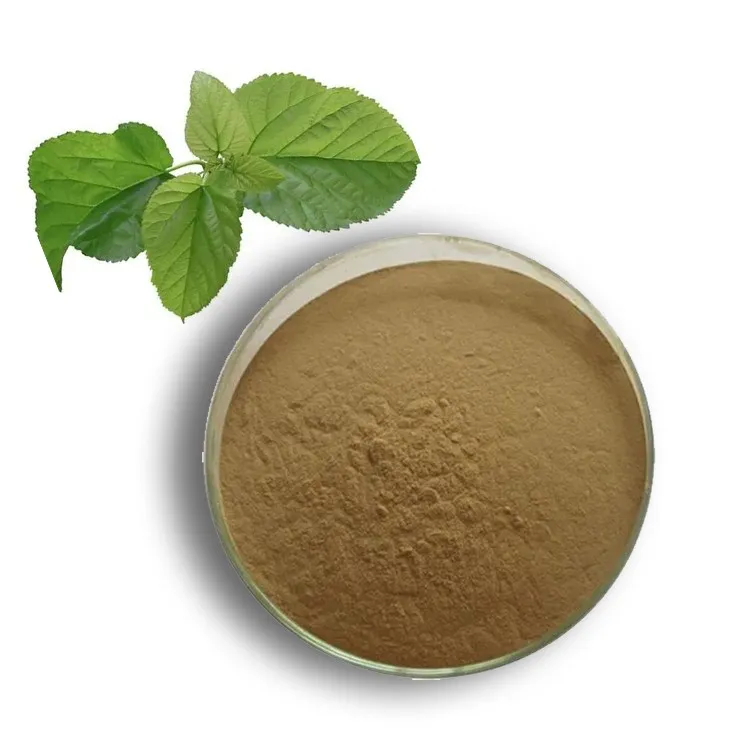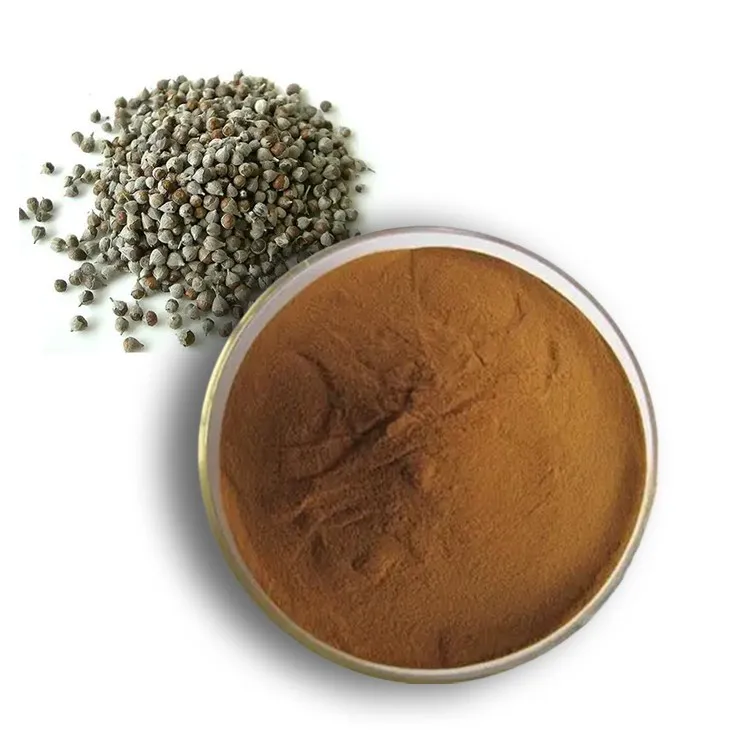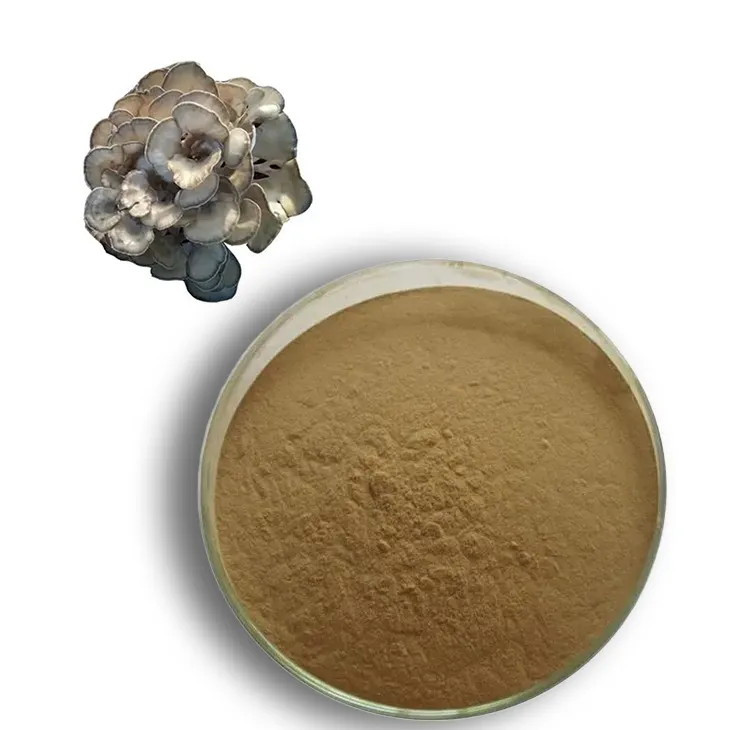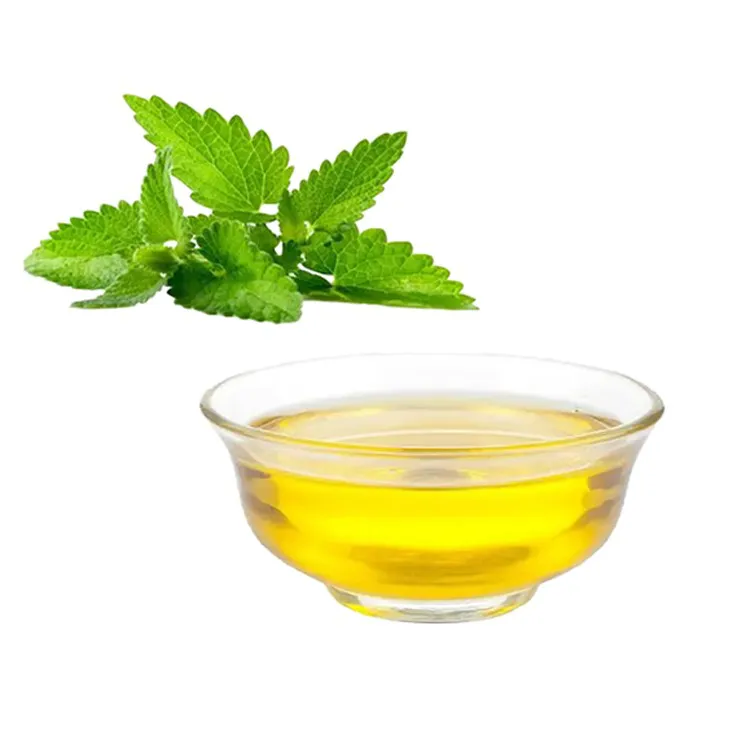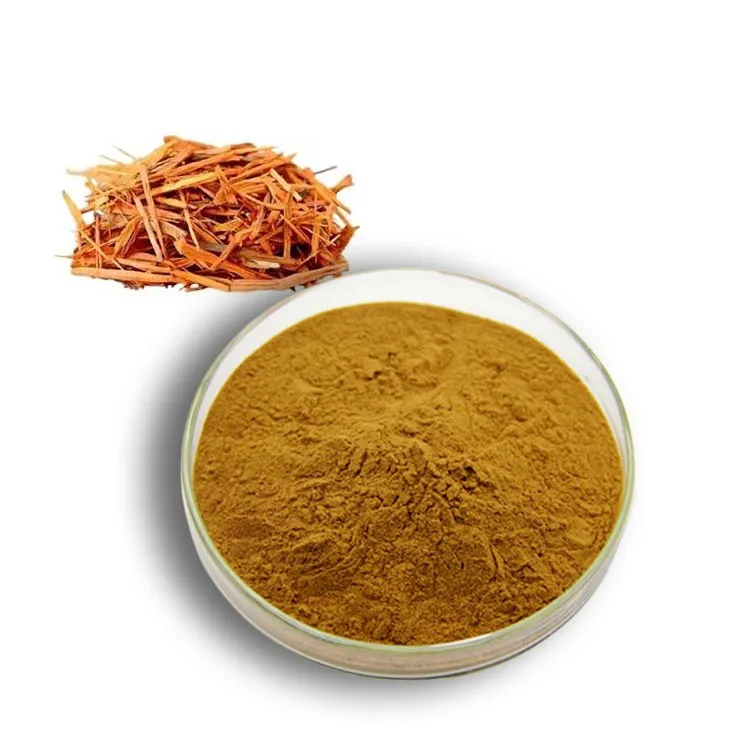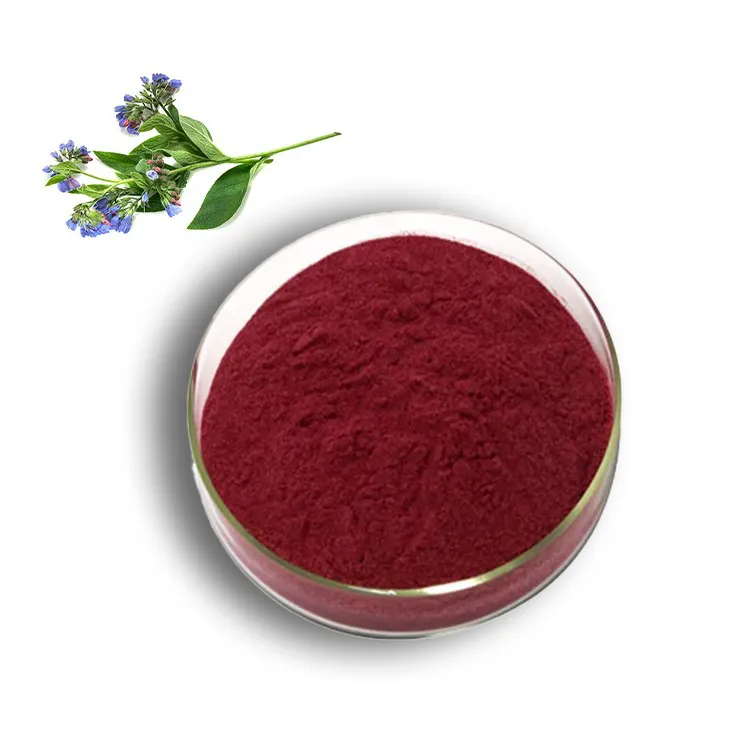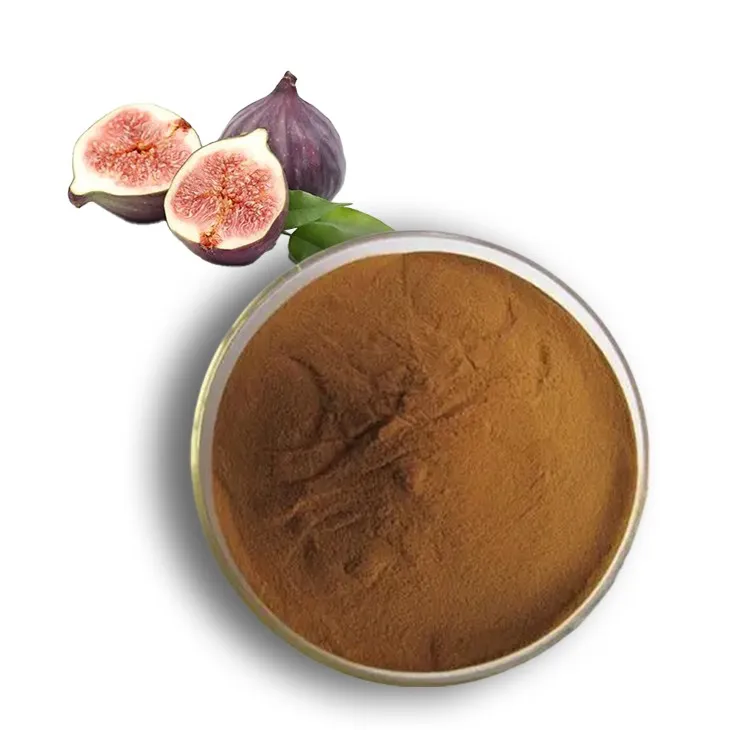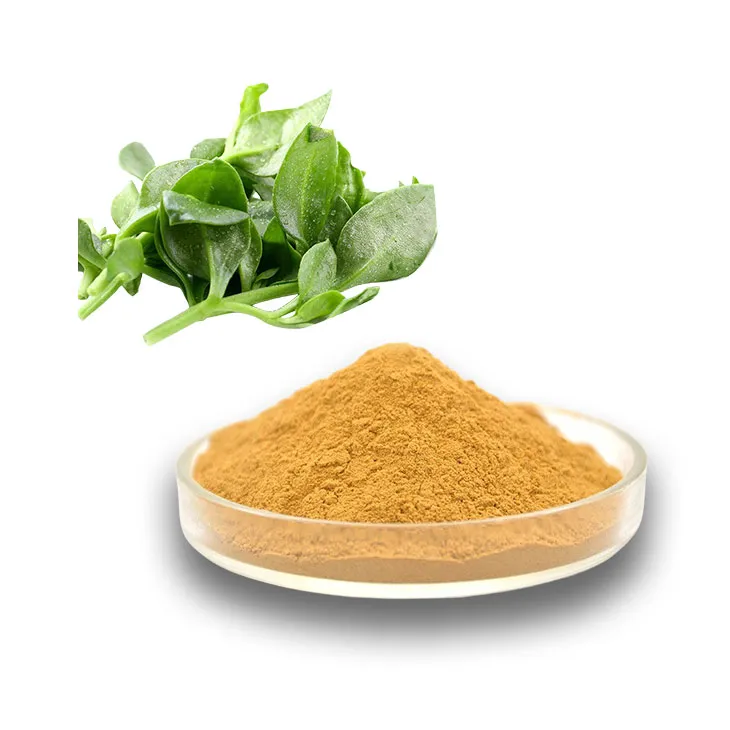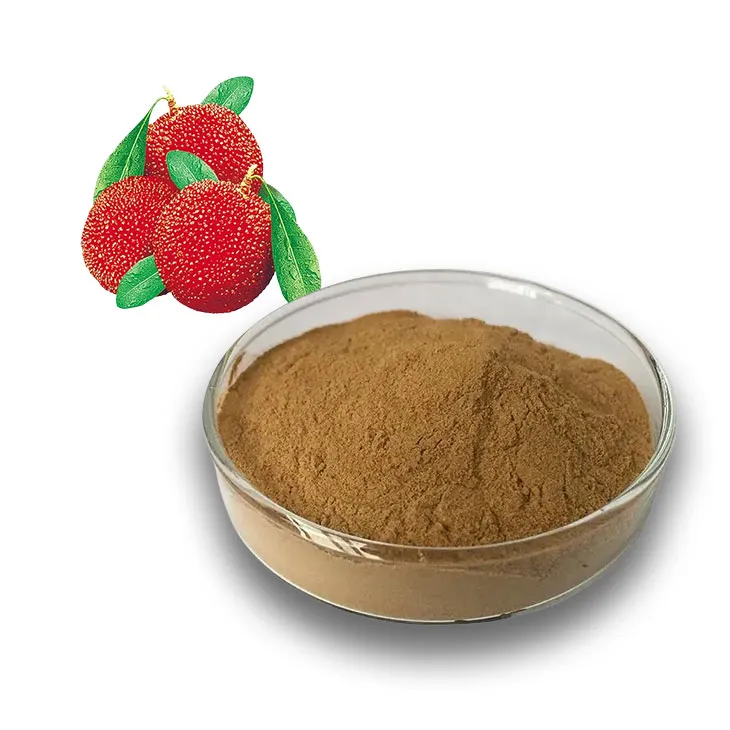- 0086-571-85302990
- sales@greenskybio.com
curcumin extraction plant
2023-09-26
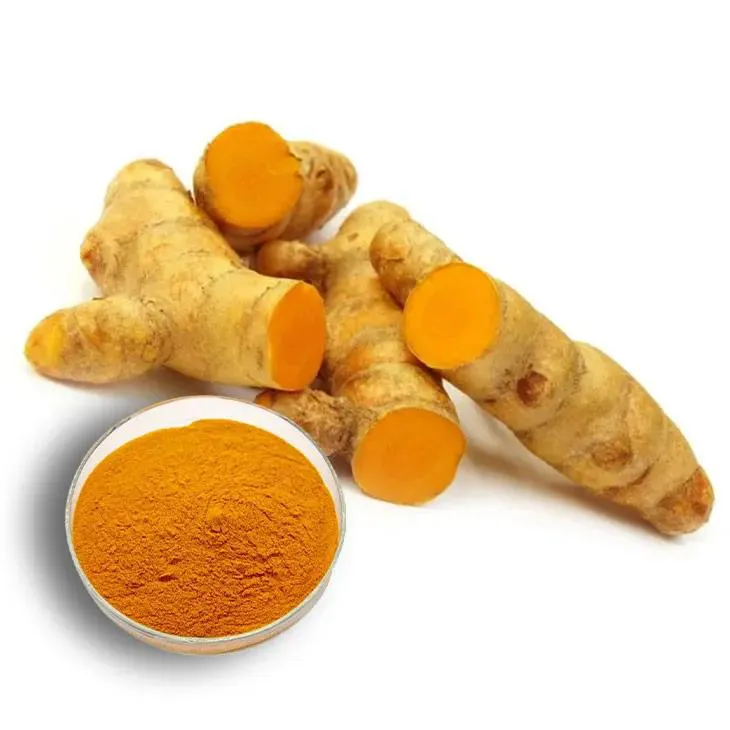
1. Importance of Curcumin Extraction
1. Importance of Curcumin Extraction
Curcumin, a bioactive compound derived from the rhizomes of the turmeric plant (Curcuma longa), has gained significant attention for its wide range of health benefits and applications in various industries. The extraction of curcumin is a crucial process that not only enhances the availability of this potent compound but also supports the growth of the nutraceutical, pharmaceutical, and food industries. Here are some key aspects that highlight the importance of Curcumin Extraction:
Health Benefits: Curcumin is known for its anti-inflammatory, antioxidant, and antimicrobial properties. It has been extensively studied for its potential role in managing chronic diseases like cancer, diabetes, and arthritis.
Industrial Applications: Beyond health supplements, curcumin is used in the cosmetics industry for its skin health benefits, in the food industry for its color and flavor, and in the pharmaceutical industry for drug development.
Economic Impact: The extraction and sale of curcumin contribute to the economy by creating jobs in agriculture, processing, and manufacturing sectors. It also supports smallholder farmers by providing a market for their turmeric crops.
Quality and Purity: The extraction process helps in obtaining a more concentrated and pure form of curcumin, which is essential for medical and research applications where the bioavailability and effectiveness of the compound are critical.
Sustainability: Developing efficient and sustainable extraction methods for curcumin can reduce the environmental impact of agriculture and processing, promoting a greener and more responsible industry.
Research and Development: The focus on Curcumin Extraction drives further research into its mechanisms of action, potential new uses, and improvements in extraction technologies, fostering innovation in the field.
Global Market: The demand for curcumin in both domestic and international markets is increasing, making the extraction process a strategic component in meeting the growing global need for this natural compound.
Understanding the importance of Curcumin Extraction is essential for stakeholders in the industry, including farmers, processors, researchers, and consumers, as it underpins the development of healthier products, sustainable practices, and economic opportunities.
2. The Curcumin Extraction Process
2. The Curcumin Extraction Process
The curcumin extraction process is a meticulous procedure that involves several steps to efficiently isolate the active compound, curcumin, from the turmeric root (Curcuma longa). Here is an overview of the typical process:
A. Harvesting and Preparation
1. Selection of Turmeric: High-quality turmeric roots are selected based on their color, size, and aroma.
2. Cleaning: The roots are thoroughly washed to remove dirt and other impurities.
3. Drying: The cleaned roots are dried to reduce moisture content, which facilitates the extraction process.
B. Size Reduction
1. Grinding: The dried turmeric roots are ground into a fine powder to increase the surface area for better extraction.
C. Extraction Method
1. Solvent Extraction: A solvent, such as ethanol or acetone, is used to dissolve the curcumin. The turmeric powder is mixed with the solvent, and the mixture is heated to improve the extraction efficiency.
2. Supercritical Fluid Extraction (SFE): This method uses supercritical carbon dioxide to extract curcumin. It is considered a greener and more efficient technique due to its non-toxic nature and the ability to operate at lower temperatures.
3. Ultrasonic-Assisted Extraction: Ultrasonic waves are applied to the turmeric powder in a solvent to enhance the extraction rate and yield.
D. Separation and Purification
1. Filtration: The extracted mixture is filtered to separate the solvent and curcumin from the insoluble plant material.
2. Evaporation: The solvent is evaporated, leaving behind a concentrated curcumin extract.
3. Crystallization: The concentrated extract is cooled to allow curcumin to crystallize, which can then be separated from the liquid.
E. Drying and Packaging
1. Drying: The crystallized curcumin is dried to remove any residual moisture.
2. Milling: The dried curcumin is milled into a fine powder or granules, depending on the end-use requirements.
3. Packaging: The final product is packaged in airtight containers to maintain its potency and prevent degradation.
F. Quality Assessment
1. Testing: The purity and potency of the extracted curcumin are tested using high-performance liquid chromatography (HPLC) and other analytical methods.
G. Waste Management
1. Recycling: The solvent used in the extraction process is often recycled to reduce waste and environmental impact.
2. Disposal: The remaining plant material and other waste products are disposed of or used in a way that minimizes environmental harm.
The curcumin extraction process is a blend of traditional methods and modern technology, ensuring that the final product is both high-quality and sustainable. Continuous improvements in the process aim to increase yield, purity, and efficiency while minimizing environmental impact.
3. Types of Curcumin Extraction Plants
3. Types of Curcumin Extraction Plants
Curcumin extraction plants are specialized facilities designed to process turmeric, a popular spice derived from the rhizomes of the Curcuma longa plant, to extract the valuable compound curcumin. Curcumin is known for its vibrant color, flavor, and numerous health benefits. The types of curcumin extraction plants can be categorized based on various factors such as the scale of operation, extraction methods, and the end products they produce. Here are some of the common types of curcumin extraction plants:
3.1 Small-Scale Curcumin Extraction Plants
These plants are designed for small-scale production, often serving local markets or individual businesses. They are typically characterized by lower investment costs and less complex machinery. Small-scale plants can be manually operated or semi-automatic, and they are ideal for farmers or small entrepreneurs looking to add value to their turmeric crops.
3.2 Industrial-Scale Curcumin Extraction Plants
Industrial-scale plants are designed for large-scale production to meet the demands of the global market. These plants are equipped with advanced machinery and technology, allowing for high-volume extraction and processing. Industrial-scale plants often have the capability to produce a variety of curcumin-based products, such as curcumin powder, oil, and extracts for pharmaceutical, food, and cosmetic industries.
3.3 Solvent-Based Extraction Plants
Solvent-based extraction plants use solvents like ethanol, acetone, or hexane to extract curcumin from turmeric. This method is known for its high extraction efficiency but may require additional steps to remove the solvent from the final product. Solvent-based plants are suitable for producing high-purity curcumin for pharmaceutical applications.
3.4 Supercritical Fluid Extraction (SFE) Plants
SFE plants utilize supercritical carbon dioxide (CO2) as a solvent to extract curcumin. This method is considered environmentally friendly and can produce high-quality curcumin without the need for additional solvent removal. SFE plants are ideal for producing premium curcumin products for the food and pharmaceutical industries.
3.5 Ultrasonic-Assisted Extraction Plants
Ultrasonic-assisted extraction plants use ultrasonic waves to enhance the extraction process. This method is known for its efficiency and ability to extract curcumin without causing thermal degradation. Ultrasonic extraction plants are suitable for producing high-quality curcumin with minimal impact on the compound's bioactivity.
3.6 Enzyme-Assisted Extraction Plants
Enzyme-assisted extraction plants use enzymes to break down the cell walls of turmeric, allowing for easier extraction of curcumin. This method is considered gentle and can preserve the bioactivity of curcumin. Enzyme-assisted plants are suitable for producing curcumin products with high bioavailability for the food and pharmaceutical industries.
3.7 Integrated Extraction Plants
Integrated extraction plants combine multiple extraction methods to optimize the extraction process and yield. These plants can produce a variety of curcumin-based products with different qualities and applications. Integrated plants are suitable for businesses looking to cater to diverse market demands.
Each type of curcumin extraction plant has its advantages and limitations, and the choice of plant type depends on factors such as investment capacity, target market, and desired product quality. As the demand for curcumin continues to grow, the development of efficient and sustainable extraction plants will play a crucial role in meeting the market's needs.
4. Equipment and Technology Used
4. Equipment and Technology Used
The efficiency and effectiveness of a curcumin extraction plant are heavily reliant on the equipment and technology employed. Here is an overview of the key components and technologies that are typically used in curcumin extraction facilities:
4.1 Extraction Equipment
- Supercritical Fluid Extractors: These are used for extracting curcumin using supercritical carbon dioxide (CO2), which is effective at preserving the compound's properties.
- Solvent Extraction Systems: Traditional solvent-based extraction methods may use ethanol or other solvents to extract curcumin from turmeric.
- Steam Distillation Units: While not commonly used for curcumin, steam distillation can be employed for certain types of extraction processes.
4.2 Separation and Purification Equipment
- Separators: These are used to separate the curcumin from the extraction solvent, often employing centrifugal force.
- Evaporators: To remove solvents and concentrate the curcumin solution.
- Crystallizers: For the crystallization of curcumin from the concentrated solution.
4.3 Drying and Milling Equipment
- Spouted Bed Dryers: Effective for drying the extracted curcumin to a powder form.
- Milling Machines: To grind the dried curcumin into the desired particle size for various applications.
4.4 Filtration and Clarification Systems
- Filter Presses: For solid-liquid separation to remove impurities and achieve a clear curcumin solution.
- Membrane Filtration Systems: To further purify the curcumin solution using ultrafiltration or reverse osmosis.
4.5 Automation and Control Systems
- SCADA Systems: Supervisory Control and Data Acquisition (SCADA) systems for monitoring and controlling the extraction process.
- PLCs (Programmable Logic Controllers): For automated control of machinery and processes within the plant.
4.6 Quality Control Equipment
- High-Performance Liquid Chromatography (HPLC): For analyzing the purity and composition of the extracted curcumin.
- Spectrophotometers: To measure the color and purity of the curcumin.
4.7 Waste Management Systems
- Evaporation Systems: For the treatment of solvents and other waste materials.
- Biofiltration Units: To manage odors and volatile organic compounds (VOCs) from the extraction process.
4.8 Innovations in Extraction Technology
- Ultrasound-Assisted Extraction: This technique uses ultrasound waves to enhance the extraction efficiency and speed.
- Microwave-Assisted Extraction: Utilizes microwave energy to improve extraction rates and reduce solvent usage.
4.9 Energy Efficiency Measures
- Heat Recovery Systems: To capture and reuse waste heat from the extraction process.
- Energy-Efficient Motors and Pumps: To reduce the overall energy consumption of the plant.
The choice of equipment and technology in a curcumin extraction plant is crucial for achieving high yields, maintaining product quality, and ensuring compliance with environmental and regulatory standards. As the industry evolves, there is a continuous drive towards adopting more sustainable and efficient technologies to meet the growing demand for curcumin.
5. Quality Control and Standards
5. Quality Control and Standards
Quality control is a critical aspect of the curcumin extraction process, ensuring that the final product meets the required standards for purity, potency, and safety. Adhering to strict quality control measures is essential for maintaining the reputation and consumer trust in curcumin-based products.
5.1 Regulatory Standards
Curcumin extraction plants must comply with various regulatory standards set by organizations such as the U.S. Food and Drug Administration (FDA), the European Medicines Agency (EMA), and the World Health Organization (WHO). These standards cover aspects such as Good Manufacturing Practices (GMP), Good Agricultural Practices (GAP), and Good Laboratory Practices (GLP).
5.2 Quality Control Measures
- Raw Material Testing: Before processing, turmeric roots must be tested for quality, ensuring they are free from contaminants and meet the required specifications.
- Process Monitoring: Throughout the extraction process, various parameters such as temperature, pH, and solvent concentration are monitored to ensure optimal extraction conditions.
- Batch Tracking: Each batch of curcumin is tracked from raw material receipt to final product dispatch, allowing for traceability in case of quality issues.
- End Product Testing: The final curcumin product undergoes rigorous testing for purity, potency, and the absence of harmful contaminants.
5.3 Certifications
Obtaining certifications such as ISO (International Organization for Standardization), HACCP (Hazard Analysis and Critical Control Points), and organic certifications like USDA Organic or EU Organic can enhance the credibility of a curcumin extraction plant.
5.4 Continuous Improvement
Quality control is an ongoing process that requires regular review and improvement. Implementing a Quality Management System (QMS) can help in systematically managing quality throughout the organization.
5.5 Training and Awareness
Ensuring that all personnel involved in the curcumin extraction process are well-trained and aware of the importance of quality control is essential. Regular training sessions and workshops can help maintain high standards of quality.
5.6 Consumer Trust
By maintaining strict quality control and adhering to international standards, curcumin extraction plants can build and maintain consumer trust, which is vital for the success of their products in the market.
In conclusion, quality control and adherence to standards are not just regulatory requirements but are also essential for the long-term success and sustainability of a curcumin extraction plant. By focusing on quality, these plants can produce safe, potent, and pure curcumin that meets the needs of consumers and the industry alike.
6. Environmental Considerations
6. Environmental Considerations
The environmental impact of curcumin extraction plants is an essential aspect to consider, as sustainable practices are increasingly valued in the food and pharmaceutical industries. Here are several key points to address in the environmental considerations for curcumin extraction plants:
1. Waste Management:
Curcumin extraction processes can generate waste products, including the leftover turmeric biomass after curcumin has been extracted. Proper waste management strategies are crucial to minimize environmental impact. This includes recycling or composting the waste, or finding innovative uses for it, such as in the production of biofuels or fertilizers.
2. Water Usage and Treatment:
Water is a significant resource in curcumin extraction, used for processes like washing, dissolving, and crystallization. Efficient water usage and recycling systems are necessary to reduce the overall water footprint. Additionally, any wastewater generated must be treated to remove contaminants before being released back into the environment.
3. Energy Efficiency:
The extraction process can be energy-intensive, particularly if it involves heating or cooling steps. Implementing energy-efficient technologies and practices can help reduce the carbon footprint of the plant. This might include using renewable energy sources, optimizing heating and cooling systems, and employing energy recovery methods.
4. Chemical Use:
The use of solvents and other chemicals in the extraction process can have environmental implications. It is important to minimize the use of harmful chemicals and opt for eco-friendly alternatives wherever possible. Additionally, proper handling, storage, and disposal of chemicals are necessary to prevent contamination.
5. Emission Controls:
Emissions from the extraction process, including greenhouse gases and volatile organic compounds, must be controlled to comply with environmental regulations. This may involve installing scrubbers, filters, or other air pollution control equipment.
6. Biodiversity and Land Use:
The cultivation of turmeric, the raw material for curcumin, should be done in a way that supports local biodiversity and does not lead to deforestation or habitat loss. Sustainable farming practices and the use of land that is already under cultivation are encouraged.
7. Lifecycle Assessment:
Conducting a lifecycle assessment (LCA) of the curcumin extraction process can help identify areas with the most significant environmental impact and guide improvements. This comprehensive evaluation considers all stages of production, from raw material extraction to end-of-life disposal.
8. Regulatory Compliance:
Ensuring compliance with local, national, and international environmental regulations is vital. This includes adhering to standards for emissions, waste disposal, and chemical use, as well as obtaining necessary permits and certifications.
9. Community Engagement:
Engaging with local communities and stakeholders is important for understanding the social and environmental context of the plant's operations. This can help in identifying potential impacts and finding solutions that are beneficial to both the environment and the community.
10. Continuous Improvement:
Finally, a commitment to continuous improvement in environmental performance is essential. This involves regularly reviewing and updating practices, investing in new technologies, and staying informed about best practices in the industry.
By addressing these environmental considerations, curcumin extraction plants can operate in a more sustainable manner, reducing their ecological footprint and contributing to a greener future.
7. Market Analysis and Demand
7. Market Analysis and Demand
The market for curcumin has been experiencing a steady growth trajectory, driven by its wide range of applications in various industries and the increasing awareness of its health benefits. Here's a detailed analysis of the market dynamics and demand for curcumin extraction:
Global Market Overview:
- The global curcumin market is expected to expand significantly over the next few years, with a compound annual growth rate (CAGR) of over 7%.
- The demand for curcumin is primarily driven by the food and beverage industry, where it is used as a natural colorant and flavoring agent.
- The pharmaceutical and nutraceutical sectors are also major consumers of curcumin due to its medicinal properties, including its anti-inflammatory, antioxidant, and anticancer effects.
Regional Market Insights:
- Asia-Pacific is the largest consumer of curcumin, accounting for more than half of the global market share. This is largely attributed to the region's traditional use of turmeric in cooking and medicine.
- North America and Europe follow closely, with a growing demand for curcumin in dietary supplements and functional foods.
End-Use Industries:
- Food and Beverage: Curcumin is used as a natural coloring agent in various food products, including snacks, dairy products, and beverages.
- Pharmaceutical: Its medicinal properties make it a key ingredient in pharmaceutical formulations for treating various conditions.
- Cosmetics: Curcumin's antioxidant properties are utilized in skincare products to improve skin health and appearance.
- Animal Feed: Curcumin is also used in animal feed to enhance the health and productivity of livestock.
Consumer Trends:
- There is a growing consumer preference for natural and organic products, which is driving the demand for natural food colorants like curcumin.
- Health-conscious consumers are increasingly seeking out products with proven health benefits, which curcumin-rich products can offer.
Supply Chain Analysis:
- The supply chain for curcumin extraction involves cultivation of turmeric, extraction, purification, and distribution to various industries.
- The quality and availability of turmeric can impact the supply chain, making it crucial for extraction plants to source high-quality raw materials.
Pricing Trends:
- Curcumin prices are influenced by factors such as the quality of the product, market demand, and the cost of raw materials.
- Fluctuations in the global economy and currency exchange rates can also affect the pricing of curcumin.
Market Challenges:
- The market faces challenges such as the need for consistent quality and purity in curcumin products.
- Regulatory compliance and ensuring the safety of curcumin extracts for various applications are also critical for market players.
Market Opportunities:
- There is a significant opportunity for innovation in the extraction process to improve yield and purity.
- Developing new applications for curcumin in different industries can also open up new market segments.
Future Outlook:
- The market for curcumin is expected to continue growing as more research highlights its health benefits.
- Investments in research and development will play a crucial role in expanding the market and meeting the increasing demand.
In conclusion, the curcumin extraction market is poised for growth with a strong demand driven by health and wellness trends, as well as its applications across various industries. Investment in this sector could be lucrative, provided that quality, innovation, and market trends are carefully considered.
8. Investment and Economic Analysis
8. Investment and Economic Analysis
Investing in a curcumin extraction plant can be a lucrative venture given the growing demand for curcumin in various industries. However, it requires a thorough economic analysis to ensure the project's financial viability and sustainability.
Market Potential:
The market for curcumin and its derivatives is expanding, driven by the food and beverage, pharmaceutical, and cosmetics industries. The demand for natural food colorings, health supplements, and anti-inflammatory agents makes curcumin a product with significant growth potential.
Capital Requirements:
The initial investment in a curcumin extraction plant includes the cost of land, construction, machinery, and equipment. The scale of the plant will determine the capital outlay, with larger facilities requiring more substantial investments.
Operational Costs:
Operating costs encompass labor, raw materials (turmeric), utilities, maintenance, and regulatory compliance. Efficient management of these costs is crucial for maintaining profitability.
Revenue Projections:
Revenue is primarily derived from the sale of extracted curcumin and its by-products. Pricing strategies should consider market demand, production costs, and competitor pricing.
Return on Investment (ROI):
The ROI depends on the efficiency of the extraction process, market conditions, and the ability to secure long-term contracts with buyers. A detailed cash flow analysis can help in estimating the payback period and the overall return on investment.
Risk Assessment:
Investors should consider various risks, including market volatility, regulatory changes, and technological advancements that could affect the demand for curcumin. Diversifying the product range and exploring new applications can mitigate some of these risks.
Government Incentives and Subsidies:
Many governments support the development of industries related to natural products due to their health benefits and potential to create jobs. Investors should explore available incentives and subsidies that can reduce the initial investment and operational costs.
Scalability and Expansion:
An economic analysis should also consider the plant's scalability. As the market grows, the ability to expand production capacity can significantly impact profitability and market share.
Environmental and Social Considerations:
Investments in environmentally friendly technologies and practices can lead to cost savings through reduced waste management expenses and can enhance the company's reputation, potentially leading to higher product premiums.
Long-Term Strategy:
A long-term strategy focusing on research and development, quality control, and market diversification can provide a competitive edge and ensure the plant's sustainability in a dynamic market.
In conclusion, while the investment in a curcumin extraction plant requires significant capital and carries inherent risks, the potential for high returns and the growing market demand for curcumin make it an attractive opportunity for investors with a strategic and well-researched approach.
9. Future Trends and Innovations in Curcumin Extraction
9. Future Trends and Innovations in Curcumin Extraction
As the demand for curcumin continues to rise due to its numerous health benefits and applications in various industries, the future of curcumin extraction is poised for significant growth and innovation. Here are some key trends and innovations that are expected to shape the curcumin extraction industry in the coming years:
1. Technological Advancements: The development of new technologies and extraction methods will play a crucial role in improving the efficiency and yield of curcumin extraction. Innovations such as supercritical fluid extraction, ultrasound-assisted extraction, and microwave-assisted extraction are expected to become more prevalent.
2. Sustainability and Eco-Friendly Practices: With growing environmental concerns, there is a shift towards more sustainable and eco-friendly extraction practices. The use of renewable solvents, energy-efficient processes, and waste reduction strategies will be prioritized.
3. Quality and Purity: As consumers become more health-conscious, there will be an increased demand for high-quality and pure curcumin extracts. This will drive the industry to implement stricter quality control measures and adopt purification techniques that ensure the purity of the final product.
4. Customization and Personalization: The trend towards personalized health and wellness solutions will influence the curcumin extraction market. Extraction plants may offer customized curcumin extracts tailored to specific health needs or preferences.
5. Integration with Other Industries: Curcumin's versatility will lead to its integration with other industries such as cosmetics, textiles, and food and beverage. This will open up new opportunities for curcumin extraction plants to diversify their product offerings.
6. Investment in Research and Development: To stay competitive, companies will need to invest in research and development to explore new applications of curcumin and improve extraction techniques. This will also involve collaboration with academic institutions and research organizations.
7. Regulatory Compliance and Standardization: As the market for curcumin grows, there will be a need for more stringent regulatory compliance and standardization of curcumin products. This will ensure consumer safety and maintain the reputation of the industry.
8. Market Expansion and Global Reach: With the increasing global awareness of curcumin's benefits, there will be opportunities for curcumin extraction plants to expand their market reach. This could involve setting up new facilities in different regions or partnering with international companies.
9. Digital Transformation: The adoption of digital technologies in the curcumin extraction process will streamline operations, improve traceability, and enhance communication with customers and suppliers.
10. Health and Safety Regulations: As the industry grows, there will be a heightened focus on health and safety regulations to protect workers and ensure the quality of the final product.
By embracing these trends and innovations, the curcumin extraction industry can look forward to a future of growth, sustainability, and continued success in meeting the needs of a health-conscious global market.
- ▶ Hesperidin
- ▶ Citrus Bioflavonoids
- ▶ Plant Extract
- ▶ lycopene
- ▶ Diosmin
- ▶ Grape seed extract
- ▶ Sea buckthorn Juice Powder
- ▶ Fruit Juice Powder
- ▶ Hops Extract
- ▶ Artichoke Extract
- ▶ Mushroom extract
- ▶ Astaxanthin
- ▶ Green Tea Extract
- ▶ Curcumin
- ▶ Horse Chestnut Extract
- ▶ Other Product
- ▶ Boswellia Serrata Extract
- ▶ Resveratrol
- ▶ Marigold Extract
- ▶ Grape Leaf Extract
- ▶ New Product
- ▶ Aminolevulinic acid
- ▶ Cranberry Extract
- ▶ Red Yeast Rice
- ▶ Red Wine Extract
-
Mulberry leaf Extract
2023-09-26
-
Chaste Berry Extract
2023-09-26
-
Maitake Mushroom Extract
2023-09-26
-
Peppermint Oil
2023-09-26
-
Yellow Pine Extract
2023-09-26
-
Cranberry Extract
2023-09-26
-
Shikonin
2023-09-26
-
Fig Extract
2023-09-26
-
Andrographis Paniculata Extract Powder
2023-09-26
-
Bayberry Extract
2023-09-26











